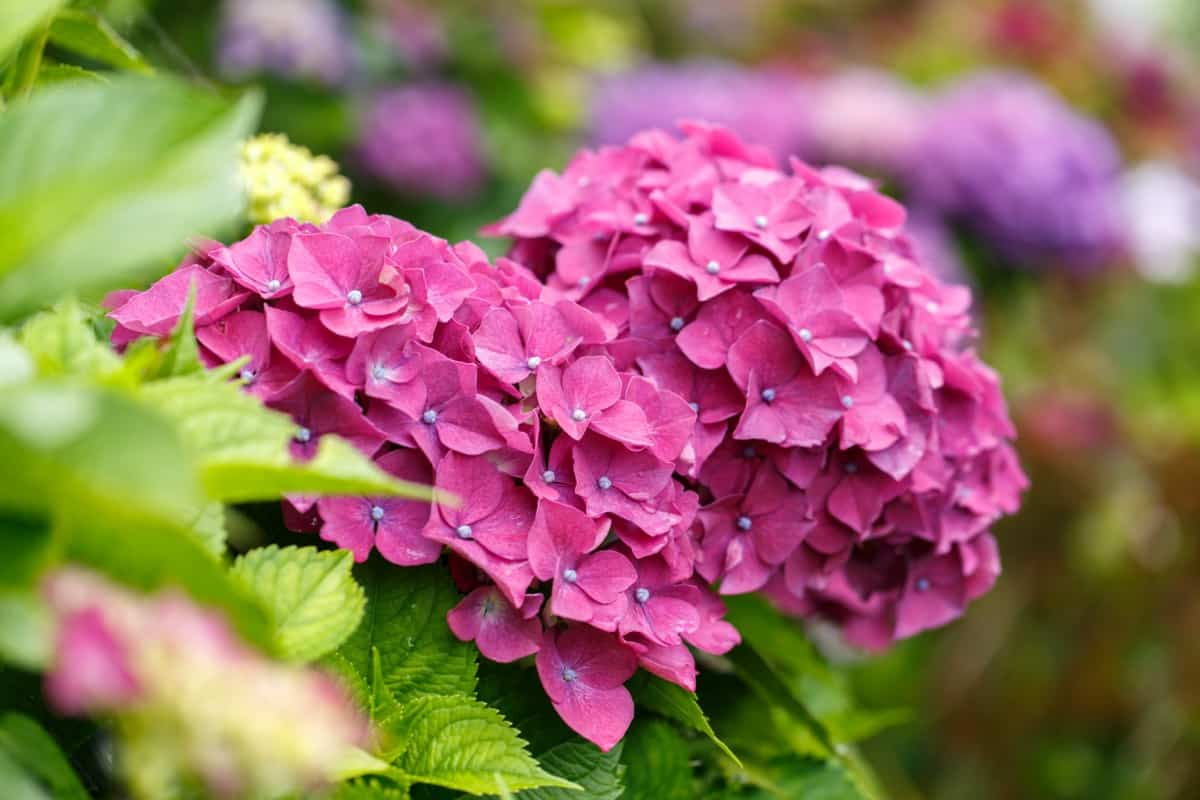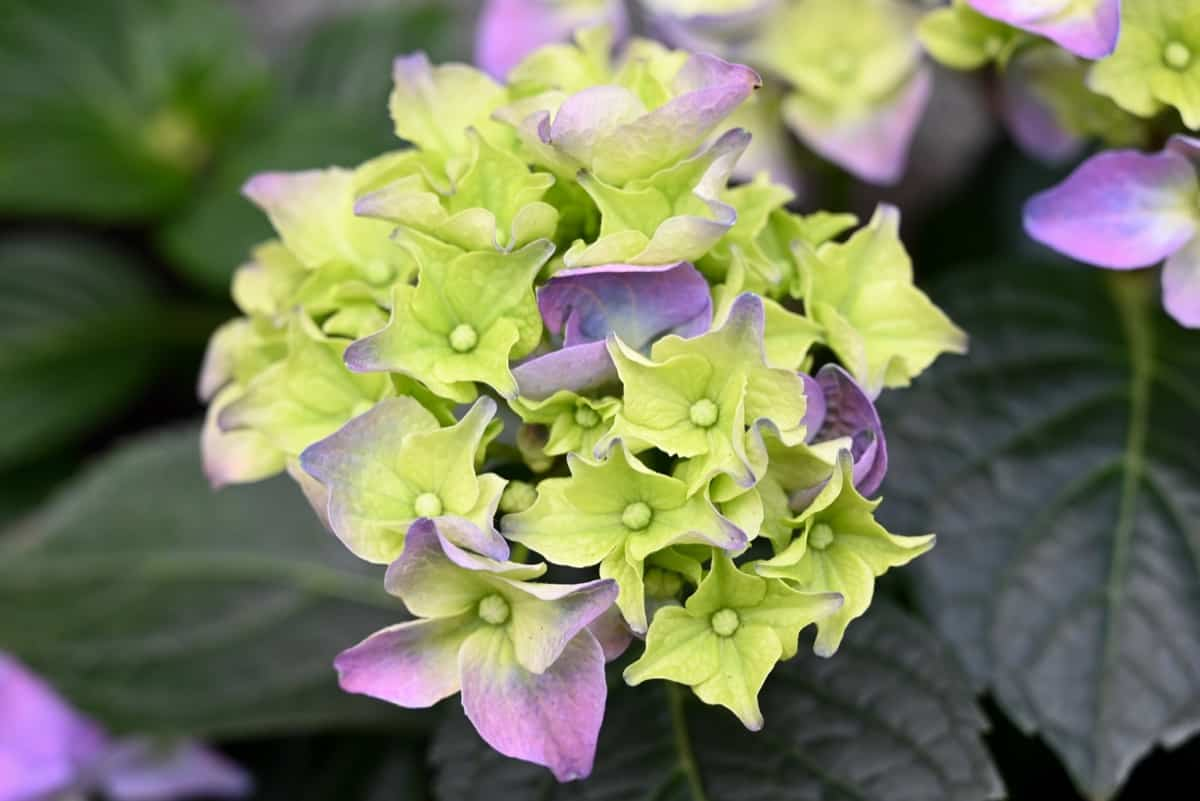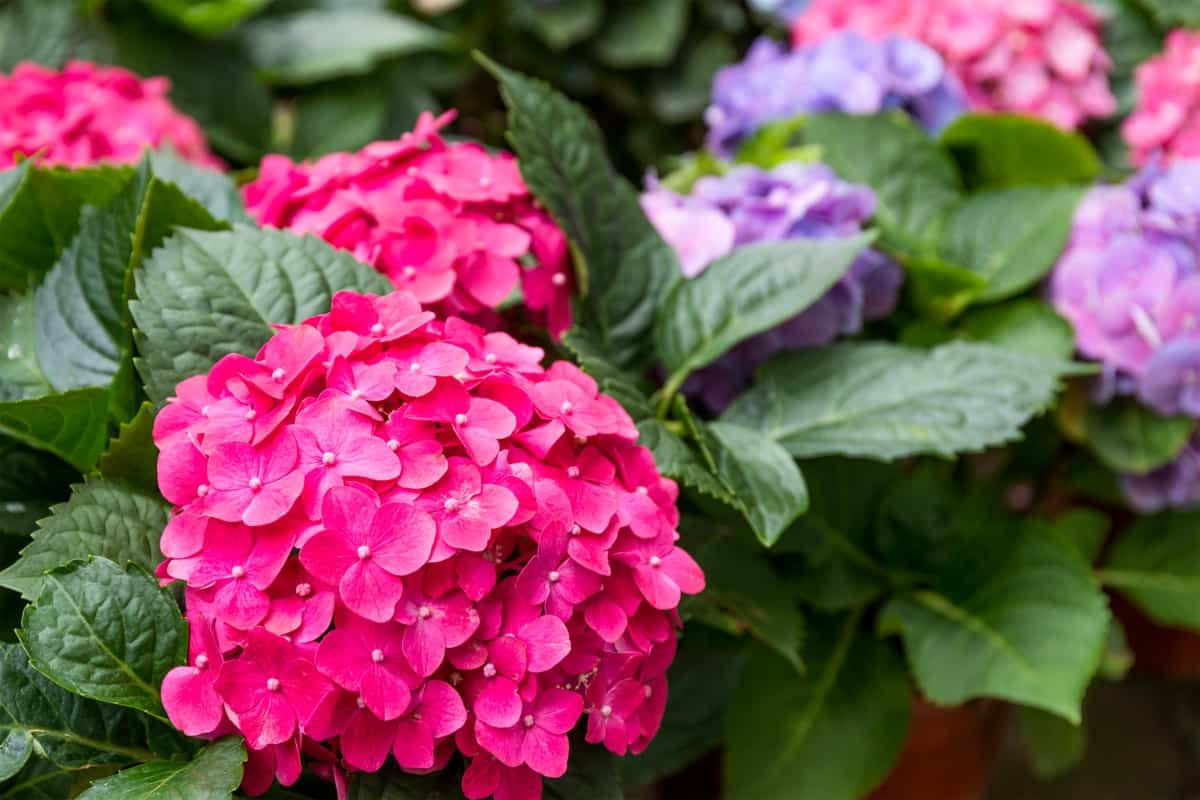Bone meal is a highly beneficial organic fertilizer that can work wonders for your Hydrangeas. It contains ample phosphorus and calcium, essential nutrients for promoting healthy growth and vibrant blooms.

Understanding the Benefits of Bone Meal for Hydrangeas
Bone meal provides phosphorus and calcium, essential for healthy growth and vibrant blooms. These nutrients strengthen the plant’s structure, promote root development, and enhance overall vitality. One of the main benefits of using bone meal on Hydrangeas is its slow-release nature. Unlike synthetic fertilizers that can cause sudden growth spurts, bone meal provides a steady supply of nutrients over time.
Utilizing bone meal as a fertilizer for Hydrangeas offers numerous benefits, resulting in healthier plants and more abundant blossoms. By understanding how this organic bone meal works and following proper application techniques, you can maximize the flowering potential of your beloved Hydrangeas year after year.
Organic Bone Meal for Hydrangeas works wonders. It contains many nutrients like phosphorus and calcium, which are essential for plant growth. These nutrients promote strong root development, leading to healthier plants overall. And when it comes to blooming, bone meal is a game-changer. Applying bone meal to your Hydrangeas is easy too. Sprinkle about three cups per 100 square feet of soil in early spring before new growth appears.
The Role of Bone Meal in Promoting Healthy Growth and Blooming of Hydrangeas
The role of bone meal in improving soil quality for Hydrangeas and improving healthy growth and blooming. Its high phosphorus content helps stimulate root development, essential for the plant’s overall health and vitality. Using bone meal to promote blooming in Hydrangeas throughout the season.
The benefits of using bone meal on Hydrangeas extend beyond providing essential nutrients. Unlike synthetic fertilizers that can cause root burn if overused, bone meal is gentle on plants and won’t harm them when applied correctly. In addition to its nutritional benefits, bone meal improves soil structure and drainage.
How to Properly Apply Bone Meal to Hydrangeas for Optimal Results?
First, make sure you choose the right time to apply bone meal. Early spring, before the first signs of growth, is ideal. This allows the nutrients in bone meal to be readily available when your Hydrangeas need them most. Next, determine the amount of bone meal needed for your Hydrangeas. How much bone meal to add to Hydrangea? For shrubs like Hydrangeas, apply 1 to 2 pounds (2.25 cups) of bone meal per plant or according to package instructions.
Now that you have the appropriate amount of bone meal, it’s time to apply it correctly. Start by creating shallow holes around each Hydrangea plant using a small garden trowel or hand cultivator. Space these holes evenly around the drip line of each plant. Carefully pour the measured amount of bone meal into each hole and cover it with soil. Remember, the proper application ensures that your Hydrangeas benefit from all that nutrient-rich goodness without waste or harm caused by over-feeding.
Exploring the Nutritional Composition of Bone Meal and Its Impact on Hydrangeas
Hydrangeas are beautiful flowering plants that add color to any garden or landscape. Providing Hydrangeas with the right nutrients ensures they thrive and produce vibrant blooms. How to apply bone meal to Hydrangeas? When applied to Hydrangeas, bone meal provides these vital nutrients directly to the soil. As the roots absorb them, they help stimulate healthy growth and blooming. The slow-release nature of bone meal ensures that the nutrients are available to the plants over an extended period.
In case you missed it: How to Grow Hydrangeas from Stem Cuttings

Bone Meal and pH Levels in Hydrangea Cultivation
In addition to its nutritional benefits, bone meal also helps maintain optimal pH levels in Hydrangea cultivation. Hydrangeas prefer slightly acidic soils (pH 5.5-6.5), allowing them to absorb nutrients more efficiently. It is an excellent choice for fertilizing Hydrangeas due to its rich phosphorus and calcium content. By incorporating this organic fertilizer into your gardening routine, you can support healthy growth and enjoy stunning blooms all season long.
The Science Behind Bone Meal’s Effectiveness in Enhancing Hydrangea Health
It is rich in phosphorus and calcium, two essential nutrients for plant growth. Phosphorus plays a vital role in promoting root growth, which is important for the overall health of Hydrangeas. It helps the plants establish a strong foundation and efficiently absorb water and nutrients. As a slow-release fertilizer, bone meal gradually releases nutrients over time, ensuring a steady supply throughout the growing season. The alkaline nature of bone meal helps counteract acidity and creates an ideal environment for these beautiful flowering shrubs.
Unveiling the Various Ways Bone Meal Benefits Hydrangeas’ Root Development
Bone meal works wonders by providing essential nutrients that aid root growth and overall plant health. The high phosphorus content of bone meal promotes strong roots, allowing Hydrangeas to absorb water and nutrients efficiently from the soil. Bone Meal act as a natural source of nutrients for Hydrangeas. Additionally, the bone meal contains calcium, which helps strengthen cell walls and supports sturdy stems.
Bone meal also contributes to promoting blooming in Hydrangeas. This organic fertilizer encourages abundant flower production by providing the necessary nutrients during their growing season. By incorporating bone meal into your regular fertilization routine for Hydrangeas, you’ll be rewarded with luscious blooms year after year.
Step-by-step Instructions for Using Bone Meal on Hydrangeas: Dos and Don’ts
Do apply bone meal in early spring before the first signs of growth. This timing allows the nutrients from the bone meal to gradually release into the soil as your Hydrangeas begin their active growing season. Sprinkle about three cups per 100 square feet around the base of each plant. Do water your Hydrangeas after applying bone meal.
On the other hand, don’t overapply bone meal. Following package instructions or consulting with a gardening expert for specific dosage recommendations based on soil conditions and Hydrangea variety is always best. Additionally, don’t apply bone meal too close to plant stems or foliage, as this could potentially burn them. Keep a distance of a few inches when sprinkling it around your plants.
In case you missed it: Bone Meal for Irises: Benefits, When, and How to Apply

Maximizing the Flowering Potential of Hydrangeas with Bone Meal Application
A bone meal can be a game-changer to boost your Hydrangea’s flowering potential. Bone meal catalyzes healthy growth and impressive blossoms by providing essential nutrients. To maximize the benefits of bone meal on your Hydrangeas, timing is crucial. Apply it in early spring before new growth emerges.
This allows the slow-release fertilizer to nourish the plant gradually without overwhelming it or causing stress. Incorporating bone meal into your gardening routine will enhance root development in your Hydrangea plants. Strong roots mean better nutrient absorption and overall plant health – two key factors contributing to bountiful blooms.
Long-term Effects of Bone Meal on Hydrangea Growth and Sustainability
One crucial aspect of Hydrangea cultivation that can greatly impact their growth and sustainability is the soil’s pH level. The pH level of the soil directly affects plant nutrient availability. Bone meal, a natural product with high calcium levels, can help regulate and balance the pH levels in your Hydrangea. Maintaining optimal pH levels improves nutrient uptake and enhances overall plant health. With balanced acidity or alkalinity in the soil, your Hydrangeas can grow stronger roots, develop vibrant foliage, and produce abundant blooms year after year.
Unlocking the Secrets of Successful Hydrangea Cultivation with Bone Meal
Bone meal is a fantastic organic fertilizer that can greatly benefit Hydrangeas. When applying bone meal to your Hydrangeas, remember to do so in early spring before new growth appears. Follow the dosage instructions carefully on the packaging, which usually suggests about three cups per 100 square feet of soil. This will provide sufficient nutrients for your plants without overwhelming them. While it offers numerous benefits for Hydrangeas, it’s important to maintain balanced nutrients and consider other factors like proper watering and sunlight exposure.
In case you missed it: How to Identify and Control Rose Slugs in Northern California: Naturally, Chemically, and Organically

Conclusion
The nutritional composition of bone meal makes it highly effective in enhancing Hydrangea health. Its balanced ratio of phosphorus to calcium boosts flower production while strengthening stems and foliage. The slow-release nature of bone meal fertilizer for Hydrangeas prevents sudden growth spurts that can stress plants or cause root burn. These beautiful flowers will thank you with bigger, brighter blooms while maintaining their health and vitality.
- Feed Your Flock for Less: Top 10 Tips to Save on Chicken Feed
- Ultimate Guide to Ossabaw Island Hog: Breeding, Raising, Diet, and Care
- Hatching Answers: The Top 10 Reasons Your Chickens Aren’t Laying Eggs
- Eggs and Economics: Breaking Down the Cost of Raising Backyard Chickens
- Defend Your Greens: Proven Methods to Keep Iguanas Out of Your Garden
- Ultimate Guide to Cinnamon Queen Chicken: A Comprehensive Guide for Beginners
- Ultimate Guide to California Tan Chicken: Breeding, Raising, Diet, Egg-Production and Care
- Ultimate Guide to Marsh Daisy Chicken: Breeding, Raising, Diet, and Care
- 10 Types of Chicken Farming Businesses You Can Start for Profits